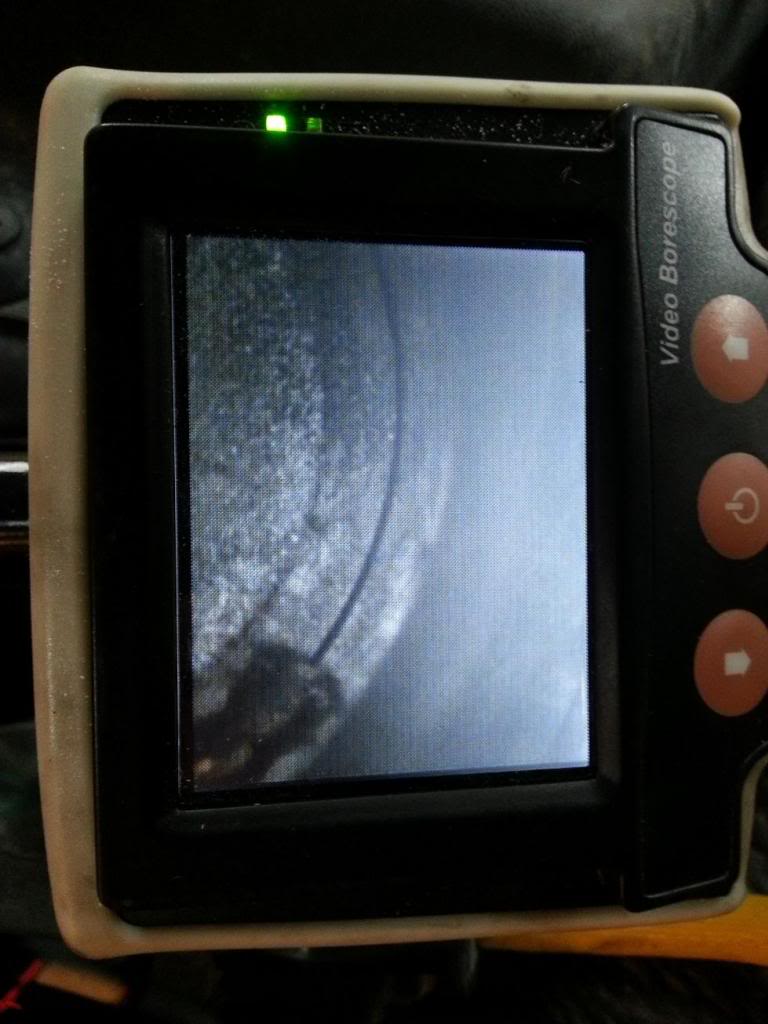4.6L Triton with low compression in cyl # 4
#1
Hi folks
I have a '98 F150 with 4.6L Triton with low compression in cyl # 4 @ approx. 30#; all other cyl are at 140# or so. Would it be a burnt valve, bent valve, cam? Any ideas before I rip it apart?
Any harm if I drive it like that? I have not have it on the road yet.
Thanks
I have a '98 F150 with 4.6L Triton with low compression in cyl # 4 @ approx. 30#; all other cyl are at 140# or so. Would it be a burnt valve, bent valve, cam? Any ideas before I rip it apart?
Any harm if I drive it like that? I have not have it on the road yet.
Thanks
#2
There are a few things you can try to isolate the problem.Remove the spark plug for the #4 cyl and manually turn the engine over in the normal direction of rotation until you get the #4 piston up to the top of it's travel. Then inject some compressed air into the cyl . Listen for air to be escaping out one of the three following places, the exhaust pipe, the intake , or the oil fill hole on the valve cover. Depending on where you hear the escaping air will point to the valve with the problem or piston if coming out of the oil fill hole. If you can you might also remove the R/S valve cover and check for a possible broken valve spring for the valves on that cyl.
Not good to drive it like that.
Not good to drive it like that.
#4
While holding the crank shaft with a Johnson bar, I put air in the cylinder with piston all the way up; the air would give the piston a good jolt. I moved the piston up & down several times while pressurized with air; at one point, lots of air came out from the oil fill hole. I inspected with my Borescope and found something weird on the piston that I can't figure out what it is.

It's the best picture I could get. Does that look like a damaged piston or what the heck is it?

It's the best picture I could get. Does that look like a damaged piston or what the heck is it?
#6
Is it possible to remove that piston from the bottom without removing the crankshaft? This is just my spare truck while I rebuild the trany in my F350 so I don't want to spend too much $ as I will sell it once I get my F350 back on the road.
Any idea if the piston will slide by the crank & block?
Any idea if the piston will slide by the crank & block?
#7
Update:
Took the oil pan off today; pressurized the cylinder with air & from underneath, I could hear lots of air pissing out so I stuck a poly hose in one ear and other end toward the bottom of the piston and lots of air in one location. I viewed that location with the borescope and yup, piston has a burnt hole which is also the spot you see in that picture above.
Took the oil pan off today; pressurized the cylinder with air & from underneath, I could hear lots of air pissing out so I stuck a poly hose in one ear and other end toward the bottom of the piston and lots of air in one location. I viewed that location with the borescope and yup, piston has a burnt hole which is also the spot you see in that picture above.

#8
A lot will depend on the mileage on the engine.
You most likely will need to remove the head , on that side and remove the piston up through the top. You need to remove the ridge on top of the cyl bore so you don't damage ??? the present piston then install the replacement piston. Depending on the condition of the rod and brg you may be able to reuse them.The ridge has to be removed so you don't damage the replacement piston and rings.I have seen this several times when someone used excessive amounts of starting fluid to get an engine started. If that was used , there could be others with the same possible problem coming due. Before going any further, do you think this may have caused the problem here?
You most likely will need to remove the head , on that side and remove the piston up through the top. You need to remove the ridge on top of the cyl bore so you don't damage ??? the present piston then install the replacement piston. Depending on the condition of the rod and brg you may be able to reuse them.The ridge has to be removed so you don't damage the replacement piston and rings.I have seen this several times when someone used excessive amounts of starting fluid to get an engine started. If that was used , there could be others with the same possible problem coming due. Before going any further, do you think this may have caused the problem here?


